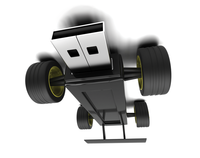
© Maksym Mzhavanadze, 123RF.com
Creating a non-certified Windows To Go USB drive
On the Go
Windows To Go (W2G) is one of those topics that leaves everyone a little puzzled at first mention. The first question that comes to mind is, "Why would I want or need such a thing as W2G?" The second is, "How do I create a W2G USB drive?" Once you have the USB drive in hand – or in pocket – many other questions arise about licensing, portability, and security. In this article, I'll answer all of your questions about Windows To Go on Windows 8.
Certified USB Drives
The list of Microsoft-certified USB drives for Windows 8 W2G is very short:
- Kingston DataTraveler Ultimate – US$ 50+
- Super Talent Express RCB – US$ 70
- Western Digital My Passport Enterprise – US$ 110
Compared with the SanDisk Cruzer 32GB I used for this article – US$ 20 at a local discount store – they're all very expensive.
Not using a Microsoft-certified USB disk comes with a few, potentially deal-breaking shortcomings: It's not an official Windows To Go image, and you don't get your personal (purchased) apps or other personalizations on installation. Although you can install applications on the disk, you have to sync your purchased apps manually. What you get is a fully functional Windows 8 system that's bootable from the USB drive. If you're using it as a portable desktop system, you have achieved your goal. If, however, you need a full, official W2G image with all of the features promised by a certified drive, then use the built-in Windows To Go Control Panel applet to create your masterpiece. Here, I describe how to create Windows To Go on a budget.
Setting Up the USB Drive
Whether you already own a 32GB USB (or larger) drive or you purchase one new for this project matters little because you have to wipe it clean before use, so be sure Windows To Go is what you want on this
...Buy ADMIN Magazine
Subscribe to our ADMIN Newsletters
Subscribe to our Linux Newsletters
Find Linux and Open Source Jobs
Most Popular
Support Our Work
ADMIN content is made possible with support from readers like you. Please consider contributing when you've found an article to be beneficial.






